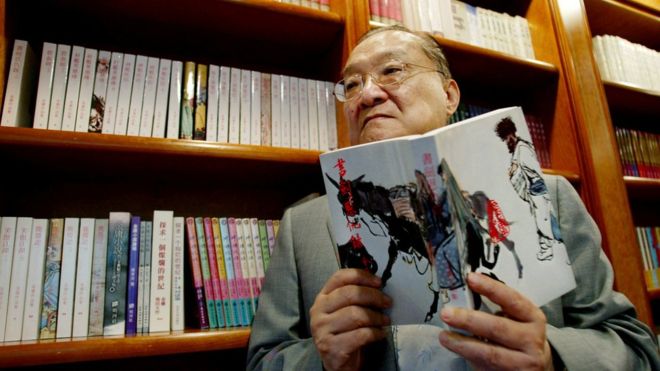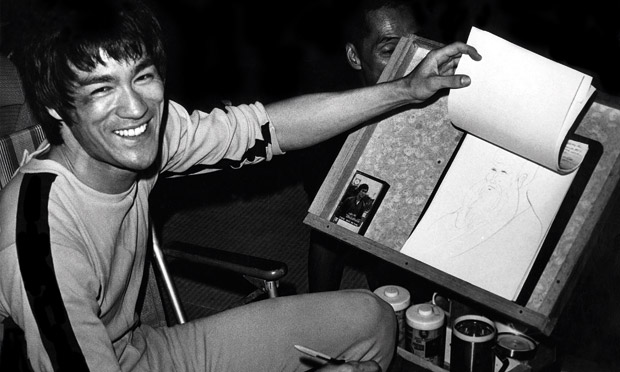
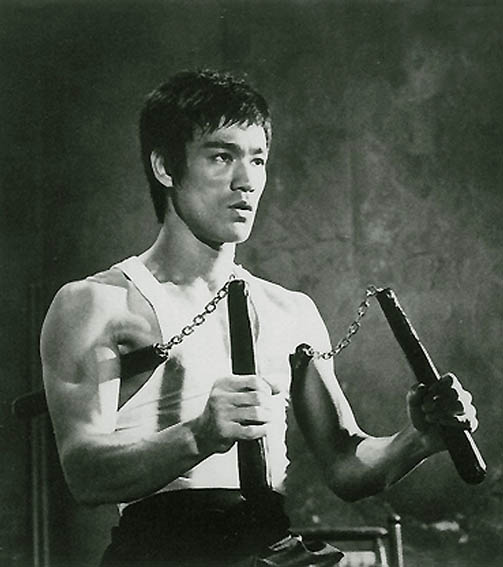
***I am off visiting family over the holiday weekend, so we are headed back to the archives. Since our (American) readers have just celebrated Thanksgiving, I though it would be appropriate to revisit an essay that asks what we should be grateful for as martial artists and students of martial arts studies. Spoiler alert, the answer is Bruce Lee.***
Introduction: Bruce Lee at 75
Yesterday I celebrated Thanksgiving with my family. As is customary on this day of remembrance I took a few moments to think about the last year and review the many things that I had to be grateful for. The year has been an eventful one.
In the professional realm I had a book published on the social history of the southern Chinese martial arts. I also delivered a keynote address at the first annual martial arts studies conference in the UK and, just recently, saw the publication of the first issue of our new journal on that same topic. I have had opportunities to meet and share my interests with all sorts of fascinating people from all over the world, and have started a number of other projects that should be bearing fruit months and years down the road. As the old Chinese saying goes, a wise man thinks of the source of the water that he drinks, and as I did so it occurred to me that I owe a profound debt of gratitude to Bruce Lee.
Today is the 75th anniversary of Lee’s birth in San Francisco. Born in California and raised in Hong Kong before returning to the West Coast at the end of the 1950s, Lee had a profound effect on the worlds of film, popular culture and the martial arts. While many claims about his career are exaggerated (one should treat with a certain degree of suspicion any assertion that someone was the “first” to do anything) there can be no doubt as to his ultimate impact on the public perception of the martial arts in America, as well as their rapid spread and popularization in the post-1970 era.
For anyone wondering what the point of Kung Fu was, Lee had a very specific answer. It combined a laser like focus on the problems of practical self-defense with a need to find personal and philosophical meaning in practice.
Like others who came before him, Lee argued that the martial arts were ultimately a means of self-creation. Yet drawing on the counter-cultural currents of the time he freed this discourse from the ideological chains that had linked such quests with ethno-nationalist projects for much of the 20th century. He instead placed the individual student at the center of the process. For Lee the martial arts went beyond the normal paradigms of personal security and self improvement and became a means of self actualization.
His own image on the silver screen promised that through these disciplines and their philosophies one could craft a “new self,” one that was fully fit for the challenges of an age of global competition and strife. It was promised that this “new self” would grow out of the process of self expression which the martial arts facilitated. Of course one had to first understand the true nature of these systems to free oneself from their stultifying structures. Individuals might agree or disagree (sometimes violently) with Lee’s assertions, but its hard to underestimate the impact that he had on the ways in which the martial arts are discussed in the West today.
Does this mean that in the absence of Bruce Lee I would not have written my book, or that we would not currently be reading a blog about martial arts studies? Ultimately those sorts of counterfactuals are impossible to answer, and they may cause more confusion than light. Japanese teachers had been promoting their arts in the West since the dawn of the 20th century. Sophia Delza knew nothing of Bruce Lee when she introduced Wu style Taijiquan to New York City. And the Korean government’s heavy support and promotion of Taekwondo had more to do with their own post-colonial struggles with the memory of the Japanese occupation than anything that came out of China.
I suspect that even in a world in which Lee had never existed the martial arts would still have found a respectable foothold in the West. A demand for these systems existed as part of larger cultural trends following WWII, Korea and the Vietnam War. Lee’s genius lay in his ability to understand and speak powerfully to the historical moment that existed.
Following his own advice he bent with the flow of history rather than fighting against it. Certainly some things would remain the same. That seems to follow from the structural nature of 20th century modernization and globalization. Ultimately our theories about the history of the martial arts are very much stories about these two forces (among others).
Yet would I be a student of Wing Chun, a somewhat obscure fighting system from the Pearl River delta region, without Bruce Lee’s rise to fame? Would I have had an opportunity to convince a university press to publish a book whose central historical case was built around a detailed, multi-chapter, biography of Ip Man, Bruce Lee’s teacher? And what of those individuals who study the martial arts? Would this body be as diverse (and sometimes radical) in the absence of Lee’s striking ability to speak to African and Latin-American martial artists (as well as many women and Asians) in the volatile 1970s?
Anthropological studies of the martial arts and social marginality remind us that people who are the most attracted to messages of resistance and individual empowerment are precisely those who have also been disempowered by the dominant social systems of the day. While the globalization of the East Asian martial arts would have come in one guise or another, its clear that I do have a lot to be grateful for when thinking about Lee’s contributions as a film maker, teacher and popularizer of the Chinese martial arts.
Birthdays are also important times for looking to the future. There can be no doubt that Lee’s image has retained a remarkable grip on the public imagination. Decades after his death he still frequently appears on magazine covers and in video games. Books bearing his name (either as an author or in their title) are found in every bookstore with a martial arts section. And Lee’s impact on the realm of martial art films can still be detected with ease. Countless allusions to his more iconic fight sequences can be seen on both the big and small screen. Ninjas may come and go, but even in the age of MMA it seems that Bruce will always have a home on the cover of Black Beltmagazine.
Still, one wonders if we are not starting to see changes in some aspects of how Lee is remembered and discussed. AMC recently aired a new series titled “Into the Badlands.” I have been following the advertising efforts around this project with great interest. The show’s creators have prided themselves in their extensive use of the martial arts. In fact, much of their advertising copy focuses on the fact that they are bringing “real” martial arts to the American small screen for the first time. Of course to make this claim with a straight face it is first necessary to seriously downplay, explain away or “forget” quite a bit of equally revolutionary TV that has come before, from Bruce Lee in the Green Hornet to Chuck Norris in Walker Texas Ranger.
A lot of discussion has also focused on Daniel Wu, the lead actor of this project. The show’s promoters have discussed the supposedly revolutionary nature of his role and the many ways in which he is changing the portrayal of Asian males in the entertainment industry. Yet if one drills down into this rhetoric very far what quickly becomes apparent is that Wu is seen as revolutionary in many of the exact same ways that Lee was seen as exceptional in his own era. The one real difference that stands out is that Wu’s character has the potential to develop a truly romantic story-line, where as this was something that was usually not seen with Lee’s films.
While the blame for this is often put on Hollywood (and there is no doubt that much of that is justified) one must also remember that Lee’s heroes came out of a genera of Cantonese storytelling and filmmaking in which romantic and martial leads tended to be somewhat segregated for important cultural reasons (see Avron Bortez for an extensive discussion of the construction of masculinity in the world of Kung Fu). While I applaud Wu for being able to pursue the sorts of roles that he finds interesting, I worry that his revolution is simultaneously erasing some of the traditional conventions of Chinese film and literature rather than challenging Western audiences with something unfamiliar. This is essentially the same discussion of hybrid borrowing vs. hegemony that seems to emerge in so many discussions of the globalization of popular culture. But whatever the ultimate resolution to this debate, it seems that there is an effort on the part of certain advertisers to retool and downplay Bruce Lee’s achievements in an effort to create a new moment of “revolution” in the current era.
Readers interested in looking at this specific discussion can see a number of the links that were included both in the most recent news update and on the Facebook group (in particular the Slate article titled “Daniel Wu is the Asian Action Hero that Bruce Lee Should have Been.”) Actually resolving the specific questions raised by all of this might take some time and far exceeds the space available in this post. Yet reviewing it led me to ask whether Bruce Lee is still the revolutionary figure that he once was. In our current moment do we still need Bruce Lee and his message of radical self-creation through the martial arts? Can he still act as a force for the popularization and spread of these fighting systems? Or is he becoming too culturally remote from modern students, readers and audiences? Is it likely that the public will remember his 100th birthday with the same enthusiasm that is greeting his 75th?
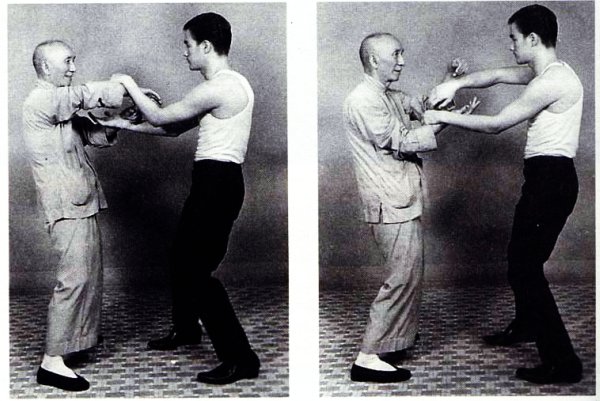
Bruce Lee and the Tao of Gung Fu
As I thought about these questions over the last couple of days I found myself turning to Lee’s unpublished “manuscript” The Tao of Gung Fu. In some respects this may seem like an odd choice. This book was never published in Lee’s lifetime, and as such most of this material had a rather limited impact on the way that people discussed either him or the martial arts in the 1970s and 1980s.
Nor is it always clear to me the degree to which this collection of chapters can be considered a true “book.” From the editor’s (John Little) description it appears that Lee abandoned the project before a complete manuscript was pulled together. A number of the early chapters were in place (they even make internal references to each other) but after that there may only have been an outline. This has been flushed out with notes, drawings and other pieces that Lee wrote over the years. Some pieces are in a more finished state than others, but none of it was ever intended to be made public during Lee’s life. In fact, it must be remembered that he made the rather conscious decision to walk away from the project. As such we can only speculate as to what would have made it into the final version had Bruce decided to actually pursue publication.
One of the things that bothers me about this particular book, as it was posthumously published by Tuttle and the Lee estate, is that it attempts to seamlessly weave this mass of material together into a coherent whole rather than letting the individual pieces, written over a range of years, stand on their own. Nor does it attempt to label what the original documentary sources of the various “chapters” actually were and how they fit into the larger body of Lee’s papers.
Obviously this is an annoyance for other historians working on Lee. And it is especially problematic when one realizes that a number of these essays were originally composed as papers for Lee’s classes at the University of Washington. While clearly bright and interested in philosophy (as well as its application to the martial arts) Lee is the sort of student who likely gave his teachers heart burn. As multiple other scholars (including John Little and James Bishop) have pointed out, Lee was guilty of plagiarizing a number of passages and key ideas throughout these essays.
In a few cases he simply borrowed text while dropping the quotes and footnotes, while in others he followed his sources much too closely (a problem known as “patchwriting”). In a number of other cases he appropriates ideas or insights without proper citation, or plays fast and loose with his sources. For a student of philosophy a surprising number of very detailed arguments are simply attributed to “Taoism” with no further support.
Worst of all, some of Lee’s best known personal stories, such as his exchange with his teacher Ip Man about the problem of relaxation, turn out to have been lifted from other sources (in that particular case the important popularizer of Zen, Allen Watts who had a striking similar exchange with his Judo teacher). James Bishop seems to be the best source currently available on the extent of Lee’s plagiarism and the sources that he was actually drawing on. Of course Lee never intended that these essays be published, let alone to be printed on t-shirts.
Given this list of problems and cautions, one might wonder why I would even discuss such a book. Simply put, the Tao of Gung Fu is a critical work not because the material in it is in any way original, but because it does a great job of clarifying the issues that were being discussed among a certain type of Chinese martial artist at a specific moment in time, and the sorts of sources that they had available to them (both in terms of technical manuals, but also cultural and philosophical resources) to make sense of all of it. While fans might be crushed by some of the instances of Lee’s patchwriting and plagiarism (which varied from unintentional to egregious) the transparent nature of these problems is actually a great blessing to cultural historians and students of martial arts studies.
Lee often starts by outlining questions that a wide variety of readers in his era would have found interesting, and with only a few minutes of googling you can figure out exactly what resources a young, somewhat educated martial artist would have had access to in both the Chinese and English language literatures. In short, for anyone interested in the specific steps by which the Chinese martial arts were culturally appropriated by the West, this book is a remarkable resource.
If you want to better acquaint yourself with the sources of Lee’s philosophy on the martial arts, this is the book that I would recommend. And for Wing Chun students it has the additional bonus of providing critical insight into how (at least some) individuals were discussing that system during the late 1950s and 1960s.
What then is the ultimate root of Lee’s philosophy of the martial arts? What ideas did he turn to in order to both make sense of these fighting traditions and to provide them with increased social meaning (and status) against the backdrop of Chinese culture and thought?
The Tao of Gung Fu provides an embarrassment of riches on these sorts of questions. Students of Wing Chun will likely find Lee’s discussions of Chi Sao (some of which is quite philosophical) to be the most interesting. And readers of history will no doubt want to pay close attention to Lee’s understanding of the subject as discussed in the book’s closing chapters.
Yet perhaps one of the most important themes in Lee’s thinking is set down in the very first chapter before being expanded upon throughout the rest of the manuscript. Here we see Lee outlining a three step process (one that he attributes to Daoism) in which something progresses from 1) the “primitive” stage 2) the stage of “art” 3) the stage of “artlessness.”
Most often this progression is applied to the martial arts themselves. Lee sees in this pattern the meta-history of the Chinese martial arts as a whole. They progressed from a simple, but natural, system to a more sophisticated but stultifying understanding. Finally, after years of hard work Chinese martial artists practiced, experimented and realized what non-essential material could be stripped away, leaving a set of systems what was both sophisticated but once again natural in its execution.
In other places Lee appears to apply this same process to the life history of individual styles. It can also be viewed as the stages that any given martial artist must progress through. In fact, Lee’s iconic “Liberate Yourself from Classical Karate” article is premised on this idea, as well as Lee’s contention that most Western martial artists at the time were stuck in stage two.
Yet Lee’s use of this basic framework extended far beyond the martial arts. At times he seems to have seen it as a more general lens by which we could examine the struggle of humans with both the natural and social worlds. Note for instance that Lee attempts to explain this teleology to his readers by using it as an explanation of the evolution of Chinese grammar between the classical and modern periods. And grasping its logic seems to be a precondition for the introduction of his later discussion of the nature of Yin and Yang in both the martial arts and Asian philosophy.
Given the centrality of this idea to Lee’s thought, it might be useful to ask where it originates. Lee himself claims that the idea is indigenous to Daoism and, at other points, Zen. This later claim may be bolstered by the observation of some Japanese stylists that their own systems suggest a similar progressive understanding of katas (or forms) in three progressive stages.
At the same time it must be remembered that Lee was a philosophy student when much of this material was written, and the resonances with some of the western thinkers he would have been introduced to is noteworthy. The system Lee is proposing seems to be somewhat in debt to Hegel and his progression from “thesis,” to “anti-thesis” and ultimately “synthesis.” We have already seen that Lee was very familiar with the works of Allen Watts, and its possible that this idea may have found its genesis in his writings. Indeed, this might be why Lee sometimes claims that he was outlining a “Zen” theory of progress.
While I suspect that this element of Lee’s thought reflects his study of Western writers and sources, once established it is the sort of thing that you can begin to see everywhere. We know, for instance, that Lee was influenced by the ideas of the mystic and writer Krishnamurti. While I have yet to find an exact statement of this idea in his writings, once it has been established in your mind it’s the sort of thing that will find easy parallels and support in some of Krishnamurti’s statements. Much the same goes for the Dao De Jing. I suspect that this theory of “becoming” struck Lee with such force, and became a cornerstone of his thought in this period, precisely because it seemed to find support in so many sources. The ease with which both Eastern and Western (and possibly even Marxist) sources could be used to illustrate aspects of this theory must have made it seem both universal and self-evident.
I suspect that this idea was also critical to Lee because while it facilitated a rejection of stultifying forms, it also argued that these things could only be overcome through study, experimentation and exhaustive practice. When we look at Lee’s workouts in this period (also provided by John Little) we see that Lee was drilling himself in basic techniques at the same time that he was advocating empirical verification and freedom from pointless tradition. There has always appeared to be a fundamental tension here, between what is necessary to learn a technique, and the desire to transcend it in the search of something more natural or personal. This three step teleology spoke directly to that dilemma, and claimed that the way forward was not a return to a primitive state that rejected scientific advances, but rather through a long and arduous process of additional practice, refinement and (most importantly) experimentation.
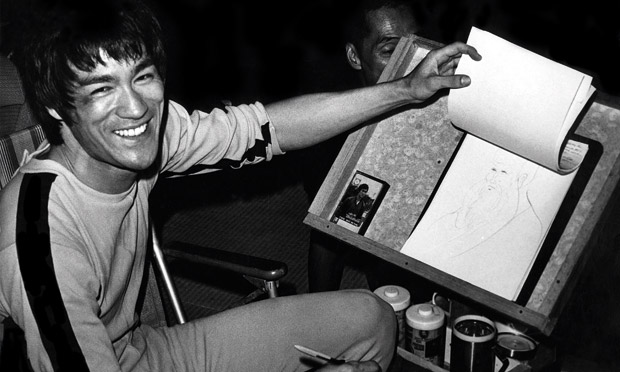
Conclusion: Walking On
While interesting on a technical level, its also important to think about the social implications of all of this. The claim that the only true knowledge which is possible is self-knowledge, gained through extensive practice and experimentation, is most likely to be attractive to individuals who feel themselves to be alienated from other sources of social power or meaning. Indeed, the basic ideas about self-actualization that Lee draws on have their origins in China’s martial arts sub-cultures which often acted as an alternate means of self-creation for marginal individuals within Chinese society.
As I have argued at length elsewhere, this would have been the context in which Lee first saw the martial arts being taught in Ip Man’s school to a generation of often angry, surprisingly alienated, young men in the Hong Kong of the 1950s. Lee’s contribution was to take this basic pattern and to combine it with the philosophical and counterculture currents of his own day in such a way that westerners could access this same technology of self-creation.
The 1970s, when the Chinese martial arts first exploded into popular consciousness, was a volatile decade. Globalization in trade markets was causing economic pain and increased income inequality at home at the same time that some western nations faced both security challenges and open conflict abroad. Nor did the gains of the civil rights movement in the US ensure the spread of racial harmony. Everywhere one looked traditional social institutions seemed to be under attack and society was struggling to produce new ways of understanding and coping with these challenges. Given these structural factors, it is not surprising that Lee’s onscreen presence and martial arts philosophy (to the extent that it was known at the time) had a profound effect on a generation of seekers looking for a new set of tools in their quest for self-production.
In many respects we seem to be entering a similar era. Clearly the situation today is not identical. The Cold War is gone, and an information and service based economy has replaced the manufacturing one (at least in the West). Yet many of the more fundamental concerns remain the same. Economic insecurity, militarism abroad and social conflict at home are once again challenging basic notions of what our nations stand for. Levels of public trust in a wide range of institutions has reached an all time low, and social organizations that once supported vibrant communities in past eras are struggling to survive.
Indeed, many of these factors are directly challenging the economic health and social relevance of the traditional martial arts today. Yet where large schools might falter one wonder’s if we are not seeing a renewed opportunity for the expansion of Lee’s ethos of individual struggle, experimentation and practice. If nothing else the recent discussion of Daniel Wu by the advertisers at AMC could be seen as evidence that there is a hunger for the renewal (and expansion) of the sort of revolution that Lee originally introduced to the West in the 1970s.
As the needs of students and audiences change I fully expect that the ways in which we see Bruce Lee will continue to evolve. That is the sign of a healthy discourse, and it suggests that Lee might be just as important for understanding the current situation within the martial arts community as its mid-twentieth century history. Given the cultural moment that we now find ourselves in, Lee’s promise of self-creation and his basic philosophy seem more important than ever. And as long as his achievements continue to be the yardstick by which each new “revolution” in the martial arts is measured, it seems likely that the memory of the Little Dragon will indeed live to see its 100th Birthday.
oOo
If you enjoyed this post you might also want to read: Two Encounters with Bruce Lee: Finding Reality in the Life of the Little Dragon
oOo
